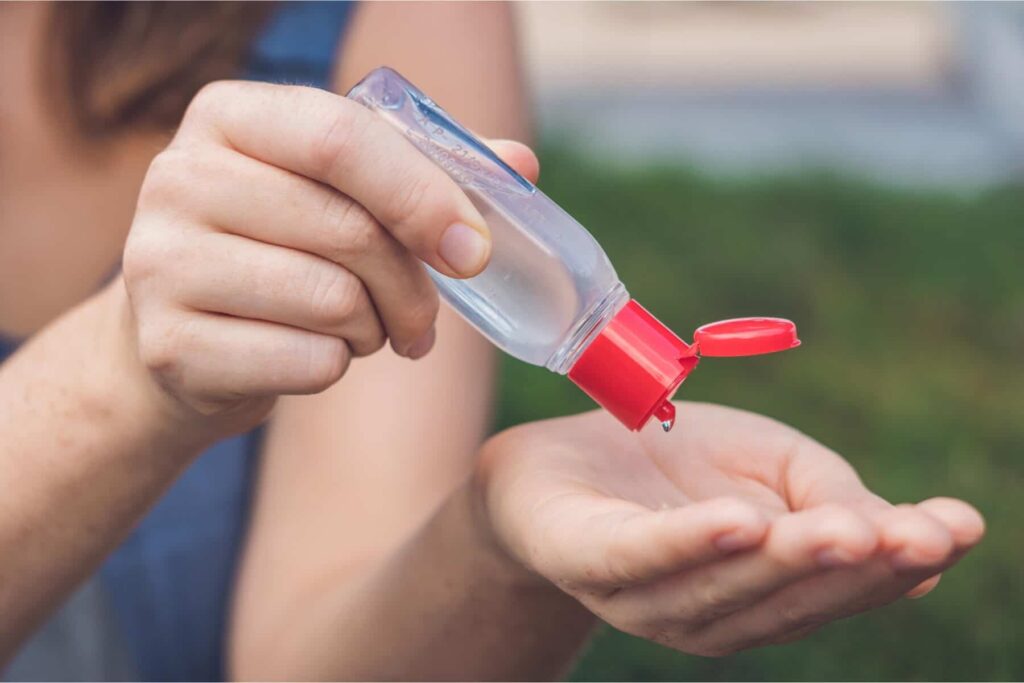
As you are undoubtedly aware, the current Covid-19 outbreak is causing hand sanitizer to continually sell out. But watch out for mass-produced hand sanitizers that include methanol or wood alcohol, both of which can be harmful if consumed or absorbed through the skin.
The best strategy to stop the transmission of germs is to wash your hands with soap and water. However, the Centers for Disease Control and Prevention (CDC) advise using a hand sanitizer with at least 60% alcohol if soap and water are not readily accessible.
The Food and Drug Administration (FDA) controls the manufacture of hand sanitizer, requiring that when purchased, commercial hand sanitizers always contain at least 60% alcohol.
Commercial sanitizers are advised since homemade sanitizers are harder to measure for alcohol concentration. In a pinch, though, you might be able to create a potent hand sanitizer at home. How? Read on.
How to make your own hand sanitizer
Warnings:
The following recipe for hand sanitizer is meant to be used by experts with the knowledge and tools required for safe production and appropriate application.
Use homemade hand sanitizers only in emergency situations where handwashing won’t be possible for a while.
Avoid applying homemade hand sanitizers to children’s skin since they may be more likely to misuse them and injure themselves.
How it works
Hand sanitizer has to have at least 60% alcohol in order to be efficient in killing germs. Alcohol content in manufactured goods is assessed using an alcohol meter.
This recipe yields a hand sanitizer with the required amount of alcohol when carefully followed. But it’s crucial to measure exactly.
The proportions of essential substances must be carefully considered or else you run the danger of producing a recipe that is ineffective or excessively harsh on your skin.
What you’ll need:
- 1 part aloe vera gel or glycerin
- 91% isopropyl alcohol (rubbing alcohol) in a 2 part solution
- A flavorful oil, like lemon or lavender (this is an optional ingredient for scent)
- Clean mixing bowls and a storage container that is airtight
- Spoon or whisk for mixing
Steps
Step 1. In a clean bottle, mix the isopropyl alcohol and aloe vera gel or glycerin. Combine 13 cup of gel or glycerin with 2/3 cup of rubbing alcohol to make 1 cup of sanitizer.
Step 2. To ensure that the alcohol is dispersed evenly throughout the gel, vigorously blend with a spoon or whisk.
Step 3. If you’re using an essential oil, stir in five drops. This is completely optional and merely serves to enhance the sanitizer’s fragrance.
Step 4. Sanitizer should be kept in an airtight container. An airtight container helps keep your sanitizer working for longer because alcohol evaporates over time. Make sure the container for your sanitizer is clean and airtight. A pump or squeeze bottle can reduce evaporation while keeping your sanitizer readily available.
Stick to a 2:1 alcohol to aloe vera ratio when creating a potent, germ-zapping hand sanitizer. This maintains the alcohol concentration at about 60%. According to the CDC, this is the bare minimum required to eradicate the majority of germs.
Is DIY hand sanitizer safe and effective?
These days, there are countless DIY hand sanitizer recipe posts on the internet, but are they secure? An at-home sanitizer is probably preferable than nothing. However, hand sanitizer designed for business purposes is usually preferable since it goes through quality control to guarantee an efficient alcohol concentration.
Homemade recipes can readily contaminated by using the wrong ingredient, using the wrong amount, or using too little alcohol to kill bacteria. It is crucial that you operate in a clean environment, use clean instruments, and wash your hands completely before starting the procedure if you decide to produce hand sanitizer at home.
Even if the recipe is straightforward, it could be difficult to locate the materials for hand sanitizer. No drinking spirits work as sanitizers; you must use rubbing alcohol, which has a greater alcohol content.
How to properly use your homemade sanitizer
It might be challenging to utilize homemade sanitizer since it is frequently more watery than professionally produced sanitizers. Your homemade sanitizer may be made simpler to use without spilling by using a squeeze or pump container.
Squeeze out just enough hand sanitizer to coat your hands completely in order to use it efficiently. By rubbing your hands together, cover every surface. It will take around 20 seconds for your hands to finish drying off while you continue to massage them together.
Handwashing vs. hand sanitizer
In order to safeguard oneself against the new coronavirus as well as other illnesses like the common cold and seasonal flu, it is important to understand when it is best to wash your hands and when hand sanitizers might be useful.
Both have a place, but according to the CDC, washing your hands with soap and water should always come first. If soap and water aren’t accessible, only use hand sanitizer in that circumstance.
Additionally, remember to constantly wash your hands:
- after going to the bathroom
- after blowing your nose, coughing, or sneezing
- before eating
- after touching surfaces that could be contaminated
The CDC provides detailed guidelines on how to wash your hands in the most efficient manner. They advise taking the following actions:
- Use only fresh, flowing water. (It may be hot or chilly.)
- Before applying soap, wet your hands with water, then turn the water off.
- For at least 20 seconds, rub your hands together while using the soap. Scrub the backs of your hands, the spaces between your fingers, and the area around your nails.
- Rinse your hands under the running water. Dry with a fresh towel or the air.